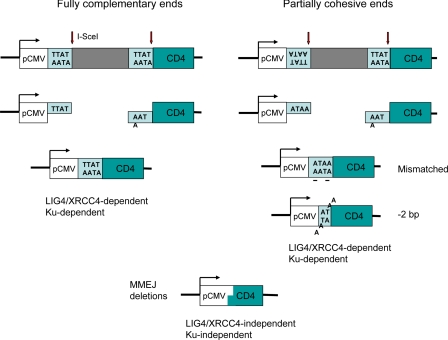Fig. 1.
Induction of NHEJ by I-SceI endonuclease cleavage. I-SceI cleaves within an 18-bp nonsymmetric site to generate 4-bp, 3′ overhanging ends. Joining of the CMV promoter to the coding sequence of the CD4 gene creates CD4+ cells that can be scored by flow cytometry. Inversion of one of the cleavage sites creates partially complementary ends. Fully complementary ends are generally joined by perfect ligation when the “classical” NHEJ apparatus (including Ku proteins, LIG4, and XRCC4) is functional. With partially compatible ends, NHEJ still permits ligation even though two sites (underlined) are mispaired. Among other joinings of the overhanging ends are 2-bp deletions requiring removal of 2 nt from each end before they can be ligated. In the absence of Ku proteins or XRCC4, most ends are joined by the alternative NHEJ pathway by using MMEJ.

